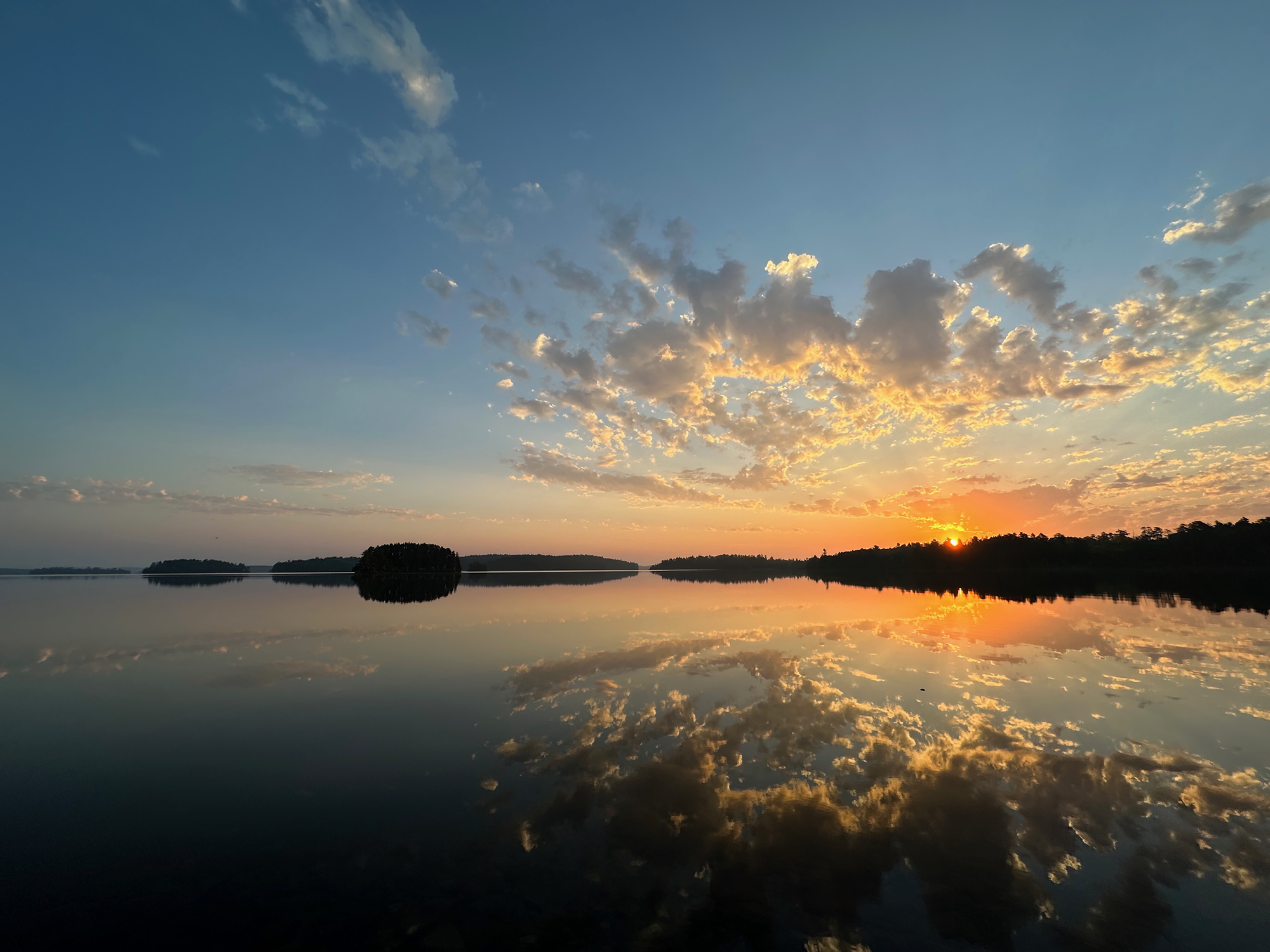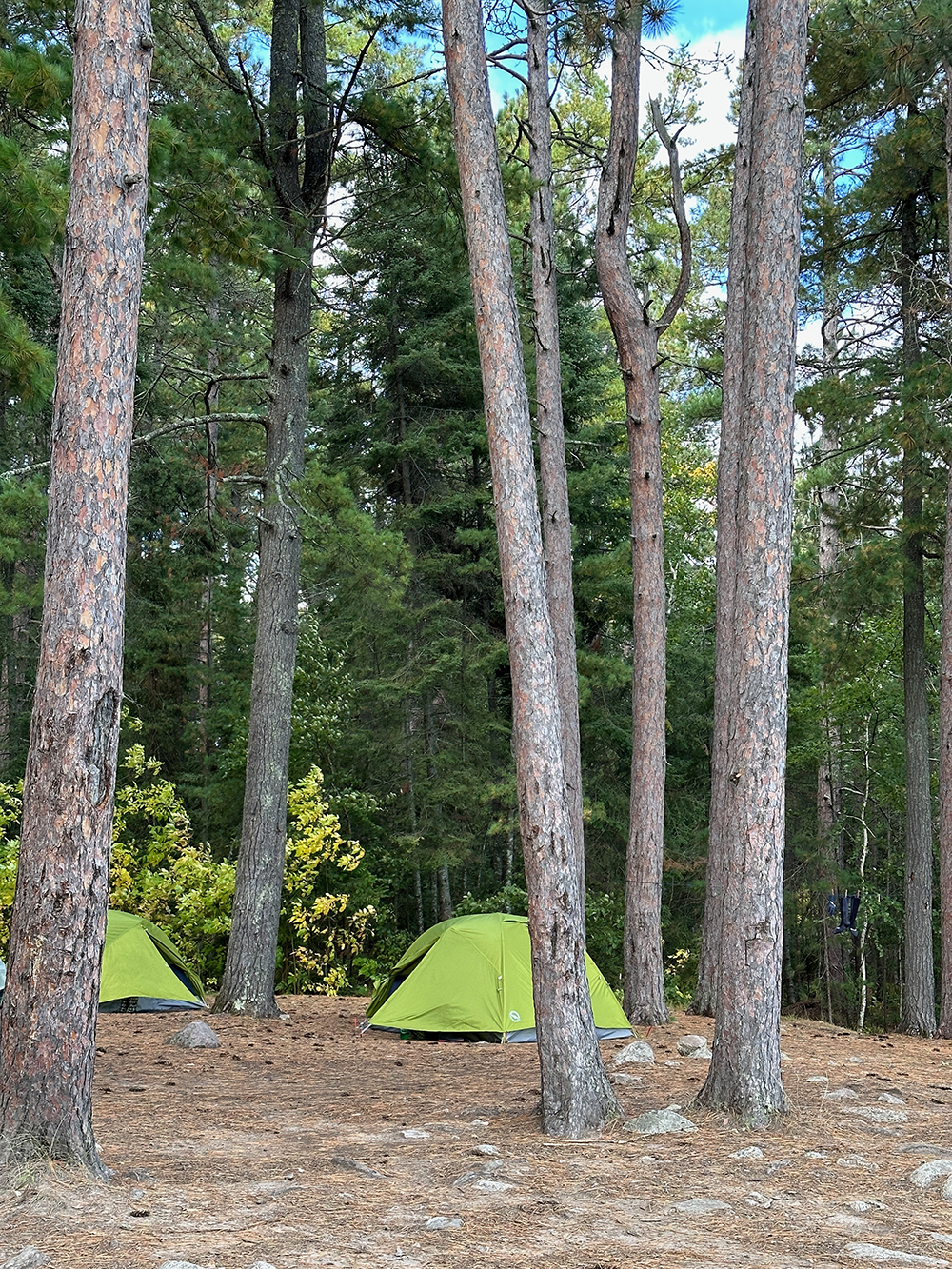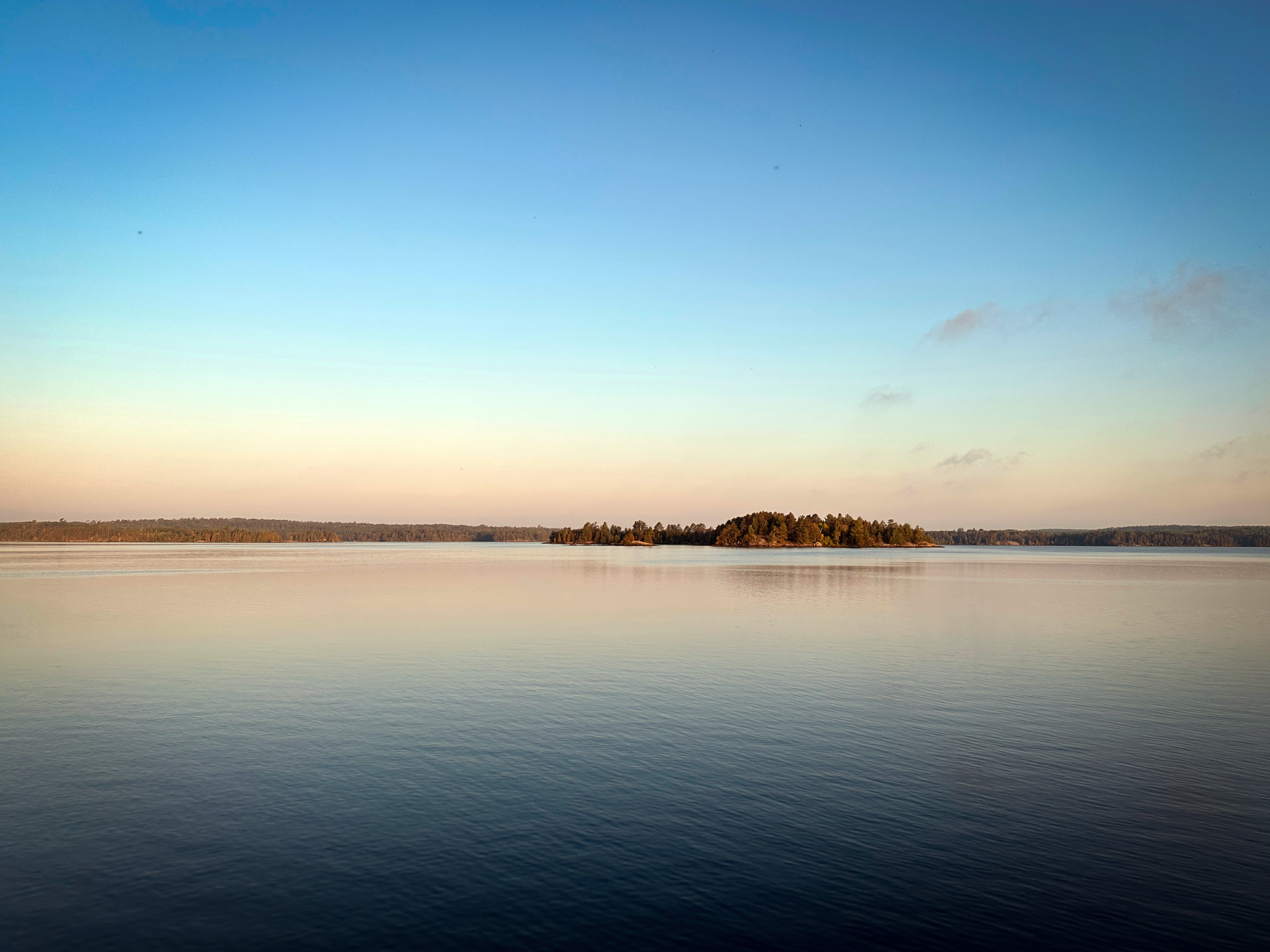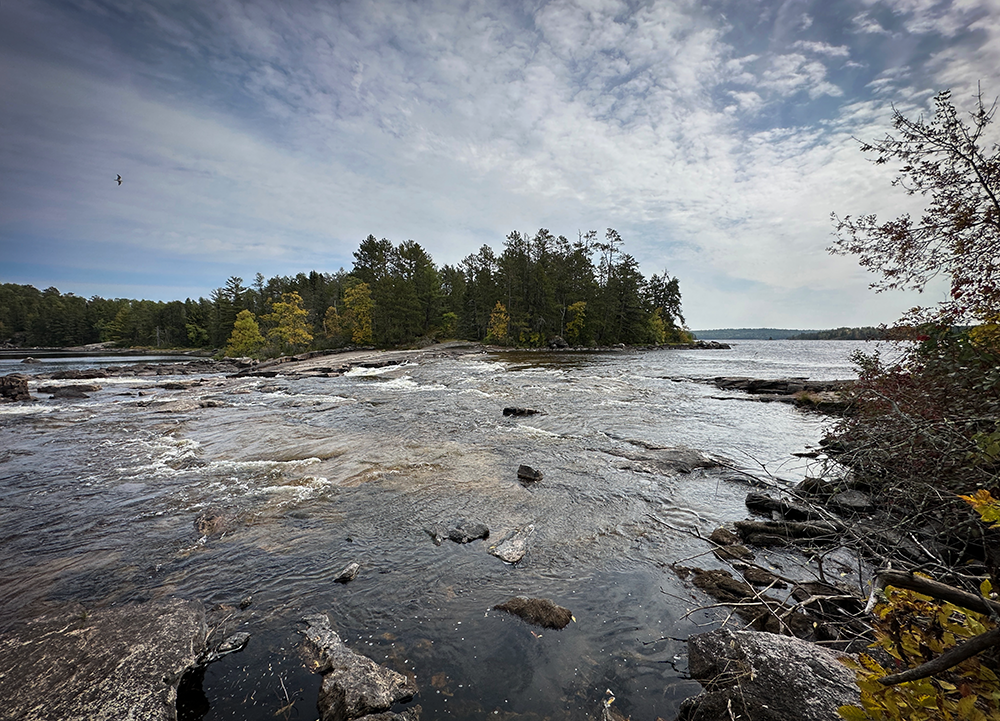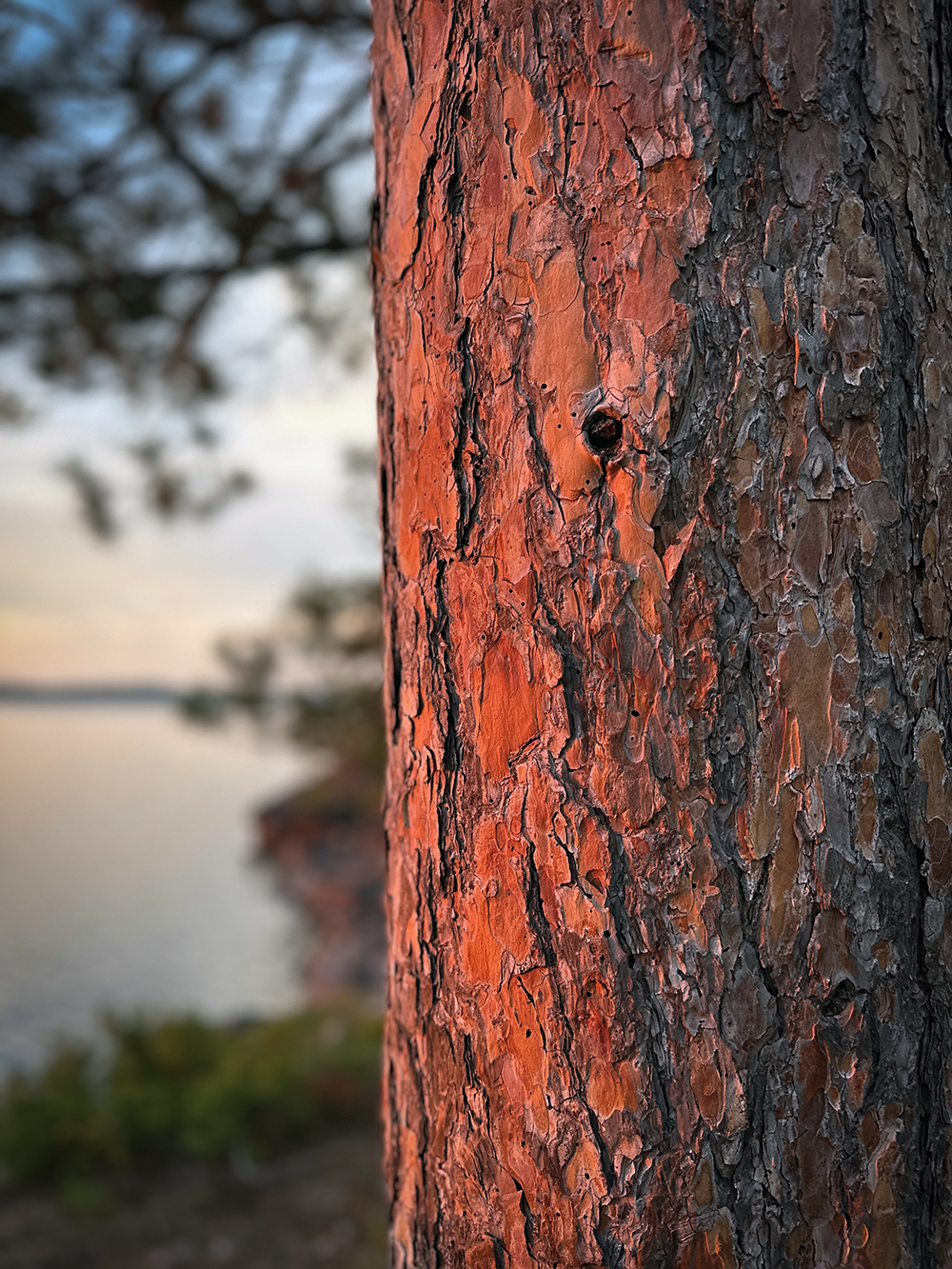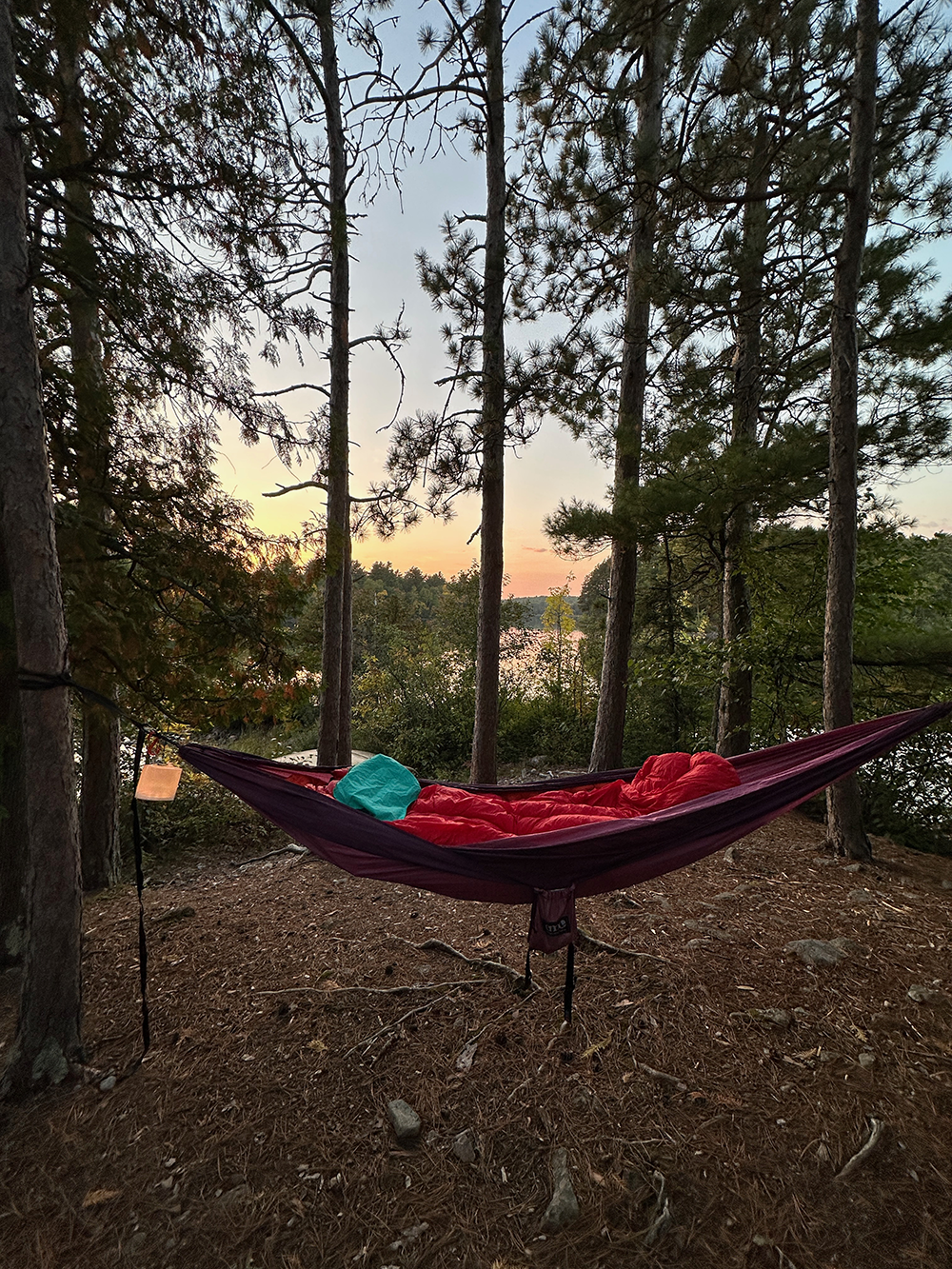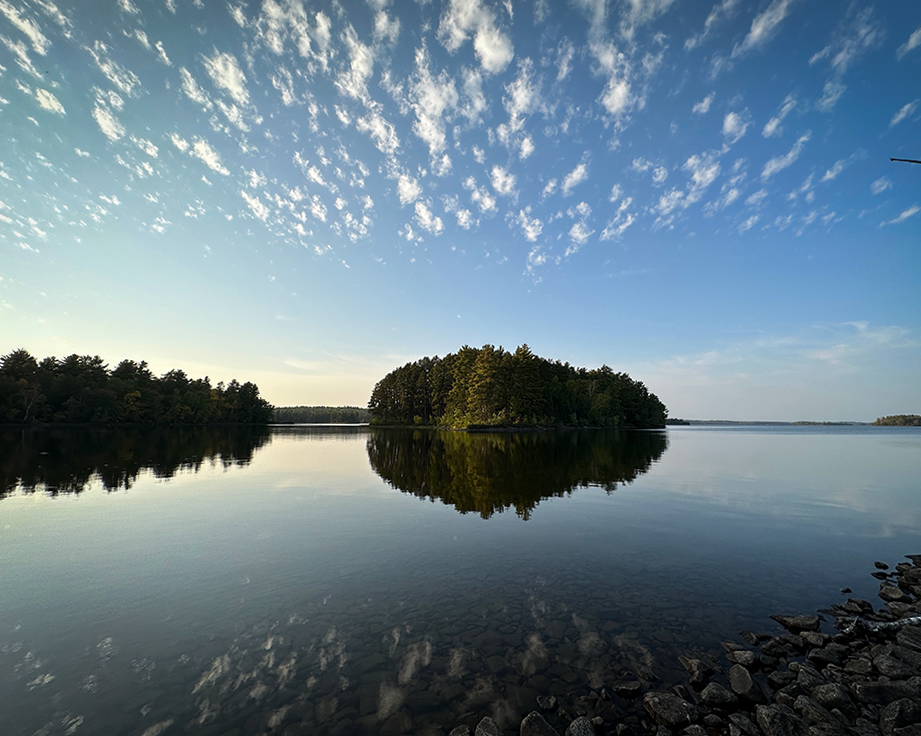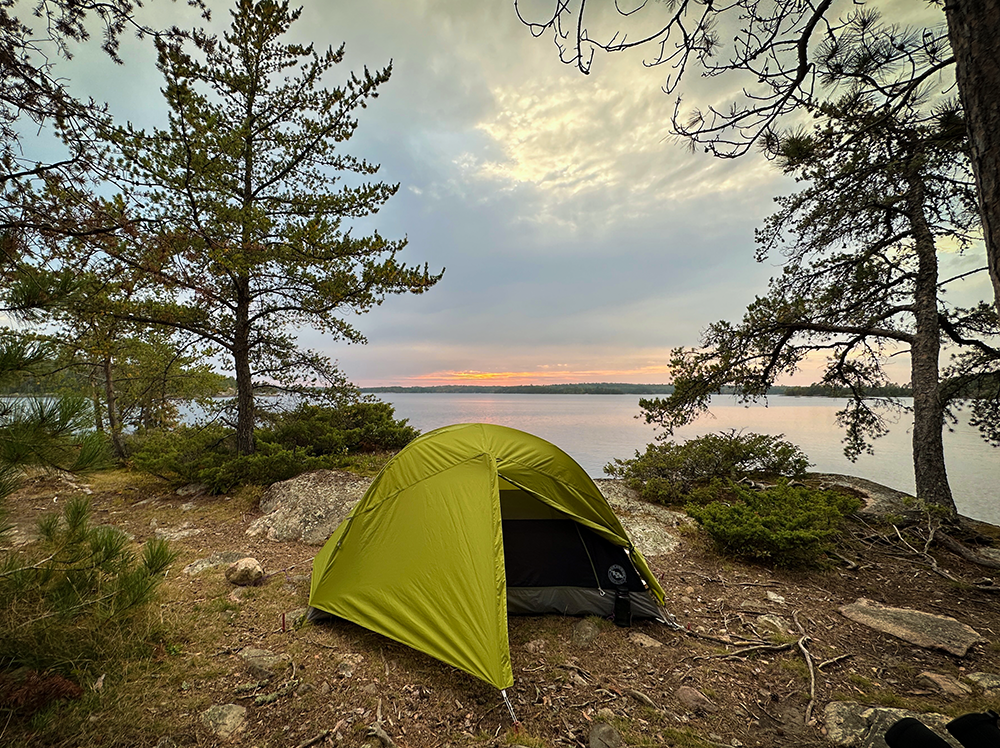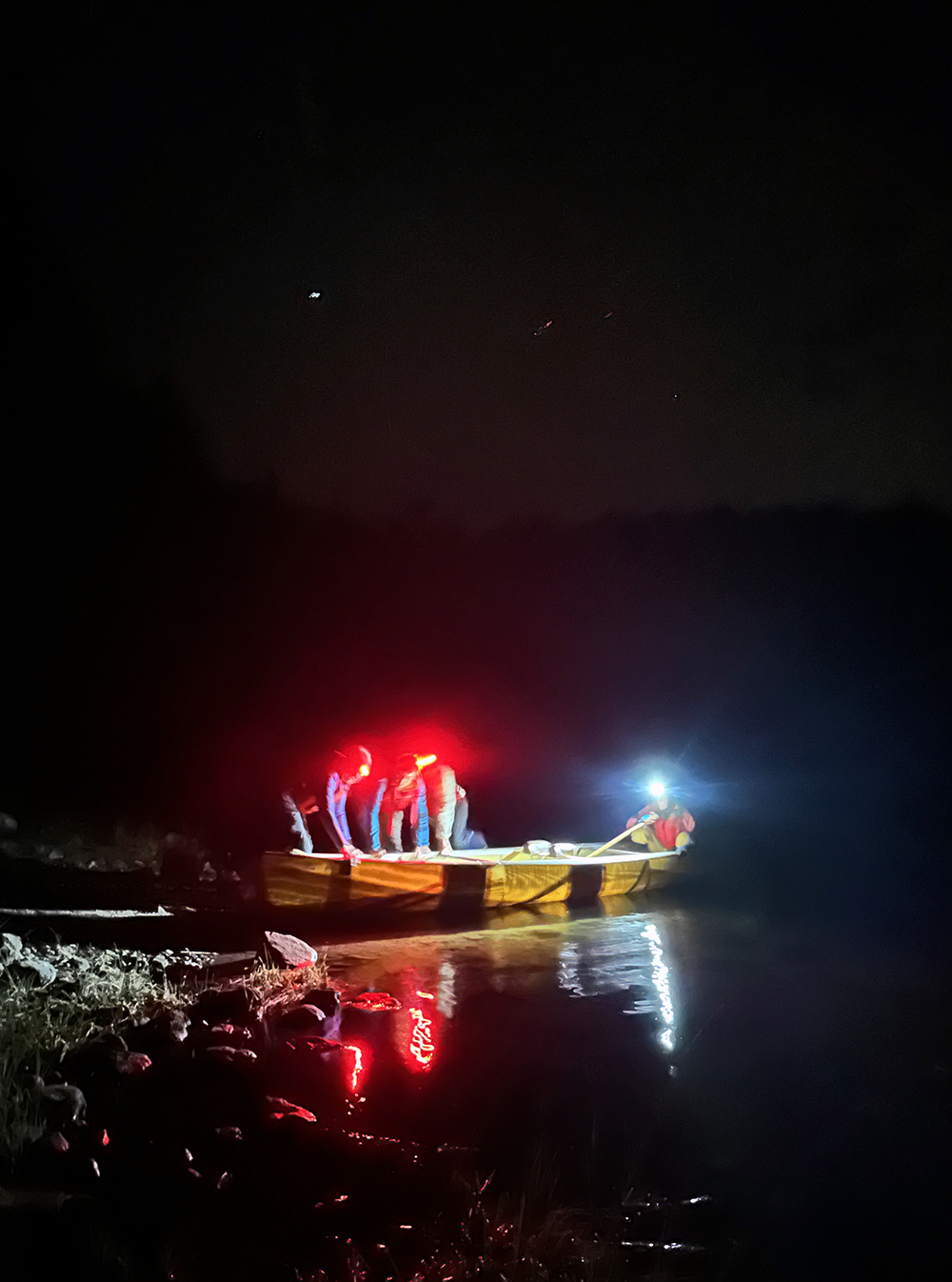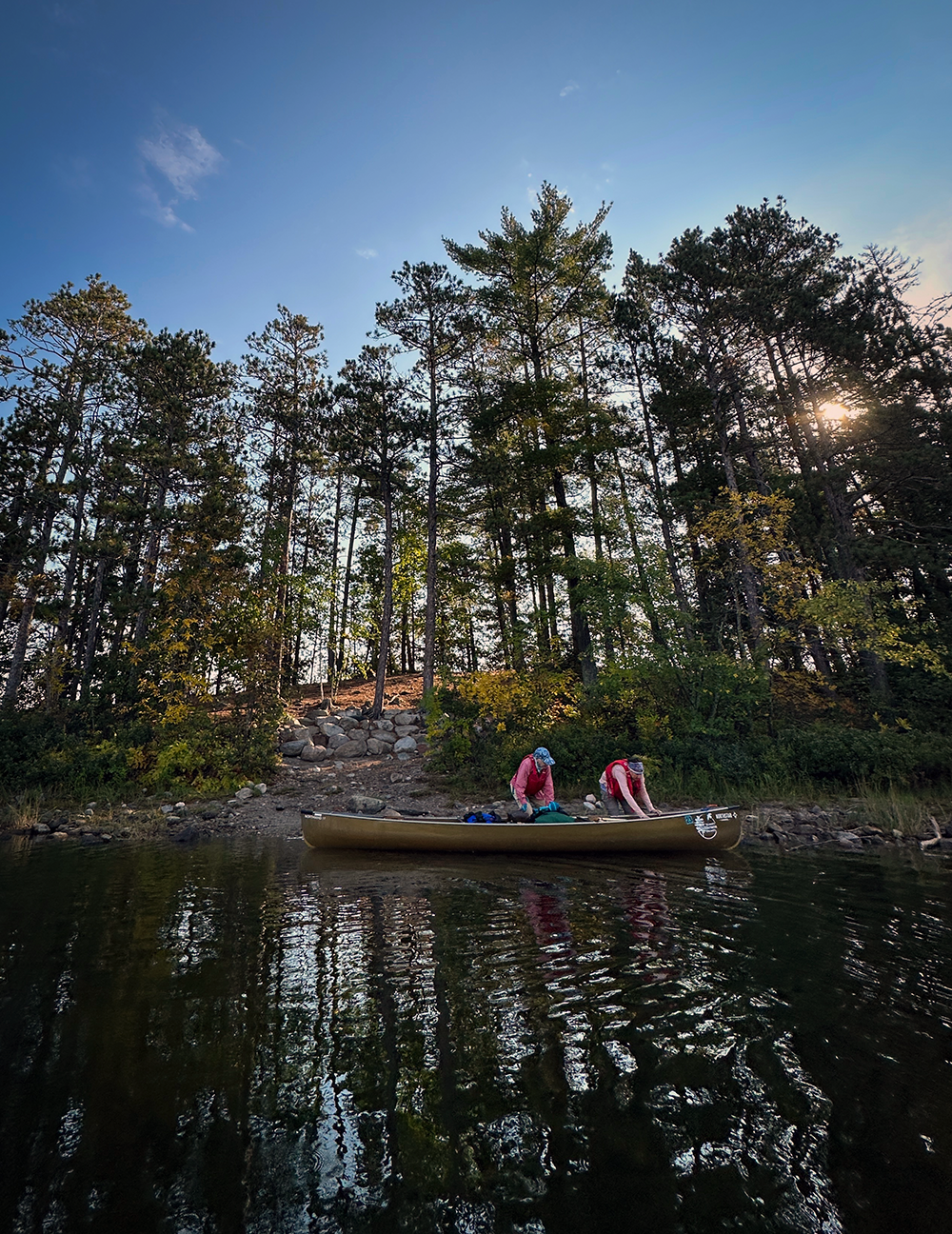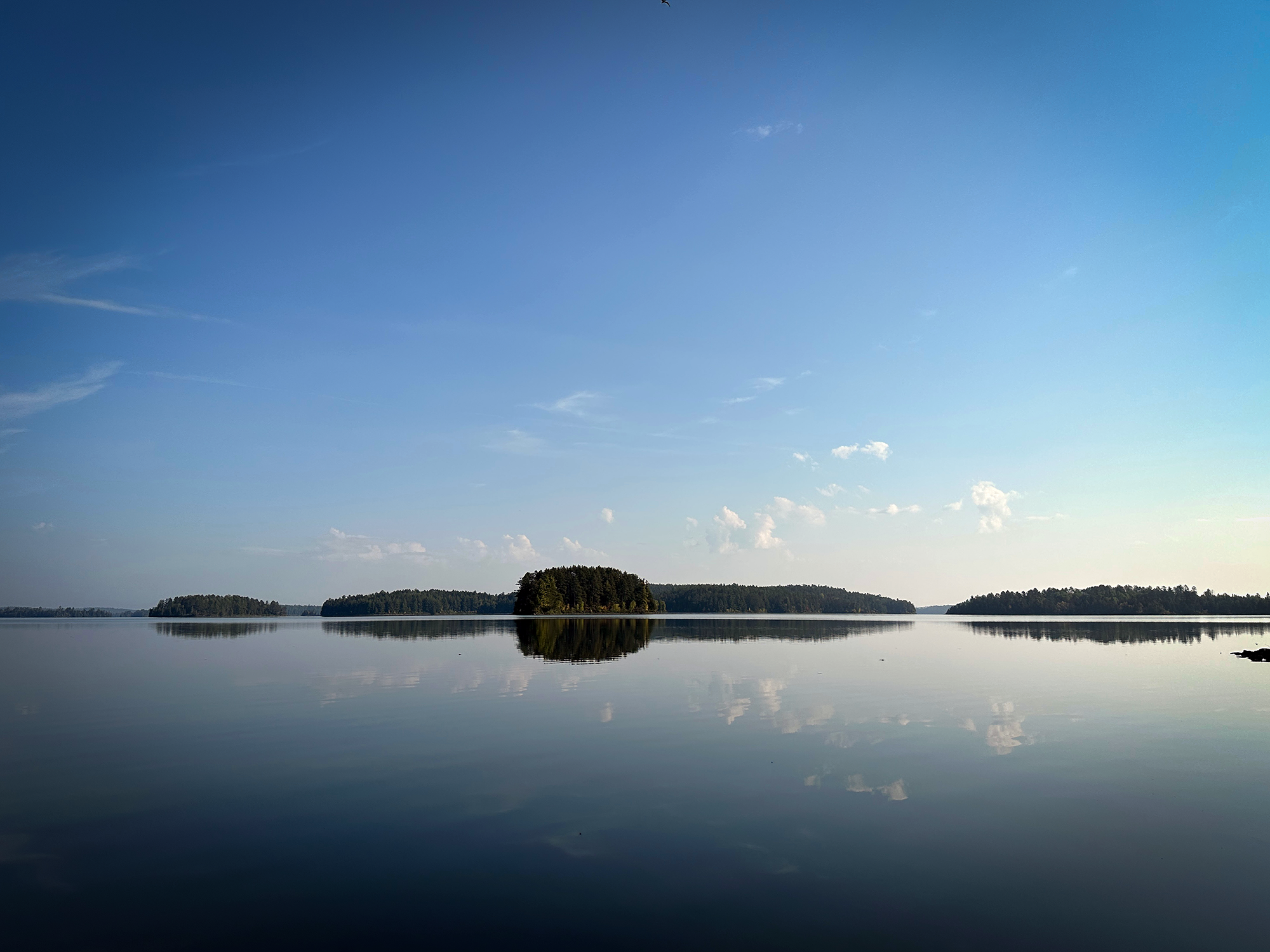BWCA | The Big Lakes Route
Town : Ely, MN
Entry Point : Fall Lake 24
Days 6 (could be done in 4 days)
Distance 37 miles
Portages 3 (We added a side loop and camped on Ensign Lake, adding a few additional miles and 2 portages.)
Season : late September
Average temps : 72º high | 50º low
Difficulty : easy - moderate
Map
The campsite was quiet as the morning sun lifted over the eastern horizon. Looking over to the Canadian shoreline, I sat on the rocky beach, mesmerized by the glassy waters. A handful of peach-tinted clouds slowly drifted west. We continued to have near-perfect weather for a late-season canoe trip.
My seasonal job as a wilderness canoe guide was almost done for the year. It would be hard to leave the wilderness and these gentle conditions belied the fact that these lakes are often full of wind. We were really lucky.
The Boundary Waters Canoe Area Wilderness (BWCA), where we’re camped is a million-acre canoeing destination located in northern Minnesota. It shares the border with Canada as well as Quetico Provincial Park, another million-acre wilderness. Remote, rugged, and secluded.
Follow along as I share some of the highlights of this beautiful border route with big lakes full of history.
Seeking North
Our group of 5 slid our canoes into Fall Lake. We were a team of season adventurers which made the trip special for me. However, all but two were strangers. As a guide, I would still navigate, make important decisions, cook food, and provide some instruction, I would enjoy the canoeing abilities of these seasoned women. For the first time in a while, I’d sit in the bow, my partner preferring the stern. We easily fell into a rhythm, not needing to say much.
Heading north towards Newton Lake, we carried our canoes and gear over the first two portages. Both pass by some beautiful waterfalls—both worthy of stopping to take photos. The weather was comfortable, hovering around 70º. We paddled through the calm waters, deep blue sky reflected on the waters.
Making good time, we got to our intended campsite early. I hadn’t camped there before but it was marked in my notes as full of pines and roomy. It was huge and likely the biggest site we’ve ever stayed on. I wondered if it had been a former resort back in the 40s as it looked too groomed and flat. While I pulled together sandwiches for lunch, the others roamed throughout the site and rested from the eight-mile paddle.
Later that night, I stirred the group from their tents. The aurora borealis was out. We gathered around the shoreline and watched the flicking of white curtains that stretched up to the center of the sky. A beautiful end to a gorgeous day.
Pausing at Upper Basswood Falls
After breakfast the next day, we headed north through Basswood Lake. Big Basswood would be a constant presence along our route for the next few days. Our day would consist of all paddling as we wouldn’t encounter any more portages for a couple of days. Around lunchtime, we stashed the canoes and gear at the Horse Portage. The portage has been used for thousands of years, as seen by evidence of projectile points and such found over 10,000 years ago. Since then, the Anishinaabe people have lived and traveled this way, eventually followed by French voyageurs carrying goods between forts. Now the mile-long portage only hears the quiet footsteps of canoeists.
We sat on the large Precambrian slab eating lunch. A stone’s throw away was Canada. For the rest of the afternoon, we’d relax as some searched for crawdads. Reluctantly, we walked back to the canoes, pushing off into the wind that had picked up, slowly making our way between islands until we reached the easter shore of Basswood. Nearly all campsites along the route were empty and we found a southwesterly-facing site that treated us to a vibrate saturated sunset. The others sat around the campfire as the sky became ablaze, playing cards, laughing at old stories, and savoring the warmth.
“While we are born with curiosity and wonder and our early years full of the adventure they bring, I know such inherent joys are often lost. I also know that being deep within us, their latent glow can be fanned to flame again by awareness and an open mind.” Sigurd Olson
Following the Canadian Border
The following day we’d straddle two countries, the US and Canada. But, by the looks of it, you could never know unless you keep an eye out for small glints of monument posts scattered occasionally along the shore. This is part of the historic French-Canadian voyageurs route. The canot de nord, or North Canoes as they were called were thirty-six feet long and could carry up to ten men. Made of birch, they were light and watertight and they were built in the style of the boats designed by the Ojibwe tribes who lived in the area. Their goods were often beaver pelts packed in ninety-pound bales that were eventually sent to far-off markets.
Along the wide, flat waters, we were surrounded by miles of boreal forest, some of the largest intact forests left on earth. Red pines, and black spruce clustered with paper birch sink in huge mats of moss and lichen-draped stones. The scent on the late-fall day is heady. We paddle along, marveling at our good luck with easy weather. A breath of breeze pushed us northeast. Once in a while, we’d take a break, languidly floating on another expanse of Basswood Lake. We had the world to ourselves. As I munched on some nuts, I noticed I could see at least thirty feet below, the lake bed a jumble of oven-sized rocks. Finally, the route abruptly turned southeast, around United States Point, and a few gulls greeted us in return.
Gently Forward
Our campsite was perched on a prominent point where the route sharply curves. Somewhere nearby was a small Canadian ranger station, though we never saw it. The stars had been brilliant the night before and so I suggested an evening paddle. The group was enthusiastic as we headed out into the quiet bay near camp. Encouraging silence and solitude, we drifted and leaned back under the bowlful of constellations. An errant star shot across the sky as we identified the Big Dipper and North Star.
The following morning I found myself in awe of yet another gorgeous sky as I got up early to “greet the morning”. I lingered at the shore contented in the silence of the air and water surrounding me. Eventually, the pot of coffee beckoned as the others started to stir. Another glorious day we’d spend following the border in what had been some of the most perfect days.
Prairie Portage
Prairie Portage felt very civilized compared to the previous days. Quiet when we stepped onto the large dock, we looked around at the manicured lawn. I suggested the group grab a snack and take a rest while I explored where we should portage our gear. This area was new to me and I relished seeing places I’d only read about.
Up near a meadow sat a locked cabin, used seasonally by summer rangers checking permits and ferrying motorized boats across the road. Yes, in the middle of nowhere, a nice gravel road connected between the bodies of water separated by a damed waterfall. It was about a seven-minute walk up a short hill to the other side. A rough portage followed alongside the waterway but it seemed too overgrown to haul canoes over. On the opposite border hidden in the trees, was the Canadian customs cabin. Everything was quiet there as well. We had two choices, either take the very short, dirt portage along the Canadian border or take the US portage which was longer and clearer. We chose the US portage, though in the summer it’s recommended that canoists take the Canadian portage avoiding the busy motorized portage on the US side.
After a few days of silence, we began to see more motorized boats and canoes, though far less than what we’d expect in the summer. Everyone we came across was cordial and friendly. Those in the motorized boats gave us a wide path.
Taking pictures by the “Welcome to Canada” sign we turned south. Making good time, we decided to paddle and portage a few miles into lakes away from the primary motorized boat path. Everyone wanted one more silent night in the woods before eventually making our way to where we’d get picked up the following morning.
Goodbye, Wilderness
The final campsite was quiet and tucked out of sight, but the lake was full of campers. The day before, we’d passed by eight campsites before finding an open one. Unfortunately, a day earlier my last bottle of fuel had leaked and so we only had about enough fuel left for coffee and one meal. I managed to cook over the fire, but it was a little challenging to maximize my cooking methods. Thankfully, nobody had to sacrifice coffee. As I cooked, the group decided that the best way to warm up in the cool evening would be to dance the Cupid Shuffle much to my amusement. Strangers at the beginning of this journey, these women had done a great job of bonding and connecting. Their sunny, can-do attitudes made the trip a delight.
We had an easy morning, not rushing too much as we only had about four miles back to the exit point. Tents were brushed off and stashed, and canoes were evenly packed while one final sweep was done through the site. As we left the wilderness, trumpeter swans honked goodbye to us as we carried our last loads up the boat landing. Six days of autumn spent gratefully in the wild.
Occasionally I recommend products on my pages. As an Amazon Associate, I earn from qualifying purchases.
